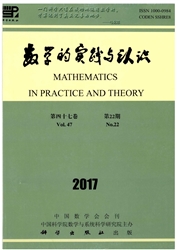

 中文摘要:
中文摘要:
建立新疆手足口病发病率的季节求和自回归-移动平均模型(Seasonal AutoregressiveIntegrated Moving Average Model,SARIMA),探讨采用SARIMA模型预测手足口病发病趋势的可行性和实用性.利用R统计软件基于新疆2006-2012手足口病月发病率数据建立SARIMA模型,拟合2012年手足口病各月发病率数据,并预测了2013年手足口病月发病率.经过序列平稳化、模型识别以及模型诊断,SARIMA(1,0,1)(0,1,0)_(12)能较好地拟合既往时间段的发病率,且预测值符合新疆手足口病实际发病率的波动趋势.SARIMA模型能够有效地预测手足口病发病趋势,对预警、防控具有积极指导意义.
 英文摘要:
英文摘要:
To establish seasonal autoregressive integrated moving average model (SARIMA) according to the hand-foot-mouth disease morbidity in Xinjiang, and to discuss the feasibility and significance of the SARIMA model in predicting the tendency of hand-foot-mouth disease morbidity. Methods: By using the statistical software R build a SARIMA model based on the month by month morbidity data of hand-foot-mouth disease in Xinjiang from 2006 to 2012, and fitting monthly incidence of hand-foot-mouth disease in 2012 and predicting the monthly incidence of hand-foot-mouth disease in 2013. Results: After a smooth sequence, model recognition and diagnosis, SARIMA(1,0,1)(0,1,0)12 can be well fit the incidence of prior periods, and the months of predictive values in 2013 accord with changing tendency of the actual incidence of hand-foot-mouth disease in Xinjiang. Conclusion: SARIMA model can effectively predict the morbidity trend of hand-foot-mouth disease and play a positive guiding role in early warning and prevention.
 同期刊论文项目
同期刊论文项目
 同项目期刊论文
同项目期刊论文
 期刊信息
期刊信息
